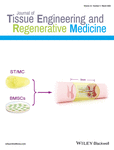Astrocytes-derived exosomes induce neuronal recovery after traumatic brain injury via delivering gap junction alpha 1-20 k
Abstract
Astrocytes are more resistant to ischemia and hypoxia in the acute phase of brain injury after traumatic brain injury (TBI). Previous study showed that gap junction alpha 1 (GJA1) phosphorylation can increase the survival of damaged astrocytes. The GJA1-20 k expression in neurons co-culture with astrocytes was positively correlated with exosomes uptake. This study aims to explore the effect of exogenous GJA1-20 k carried by astrocyte-derived exosomes on neurons apoptosis and mitochondrial function after TBI. Astrocytes were co-cultured with the neuron with/without damage from air pressure. Exosomes were isolated, extracted from the culture medium by differential ultra-centrifugation, and verified by electron microscopy. Immunofluorescence staining, tunnel, western blot were employed to detect exosomes marker CD60, apoptosis, and mitochondrial function related protein expression and GJA1-20 k in cell culture. A rat model of hydraulic injury TBI was built, and exosomes was transferred. 2,3,5-Triphenyltetrazolium chloride (TTC) staining and immunohistochemistry staining of Nissl and microtubule associated protein 2 were used to detect the brain damage. A transwell stereo culture model of astrocytes and TBI-like injured neuron was constructed. The exosomes derived from astrocytes promoted the recovery of damaged neuron by in vitro exosome treatment. Compared with GJA1-20 k knockout exosome control group, GJA1-20 k exosomes were uptaken by neuron and downregulated the apoptosis rate and upregulated mitochondrial function to promote neuronal recovery. Finally, the results were validated by TTC staining and damaged tissue sections of rat TBI model. This study contributes to a better understanding of the astrocyte-neuron protection mechanism in TBI and provides a potential new target for the treatment of TBI.
CONFLICT OF INTEREST
The authors have declared that there is no conflict of interest.




